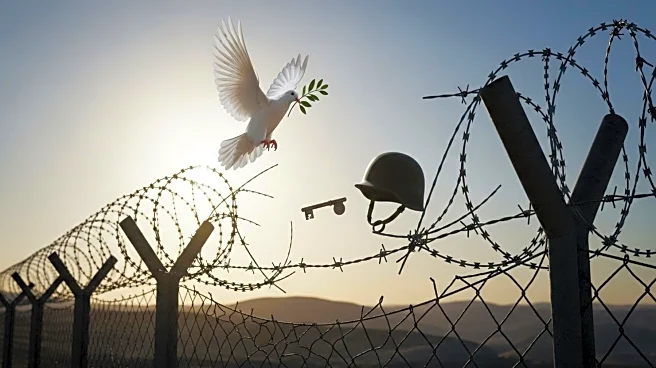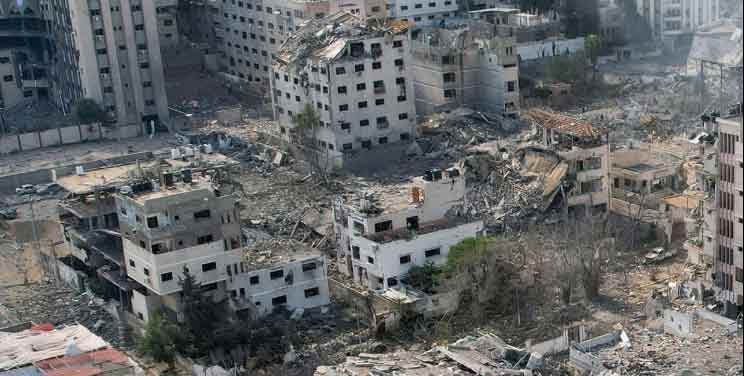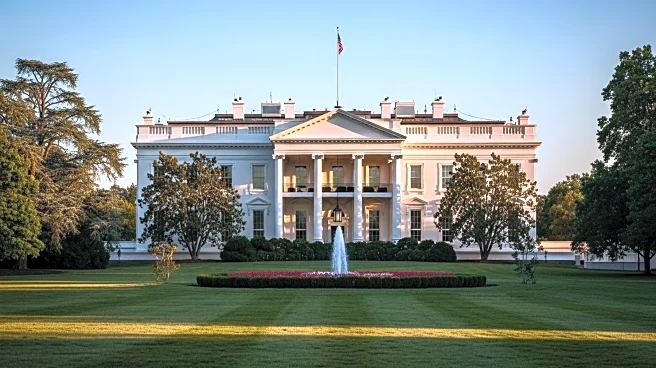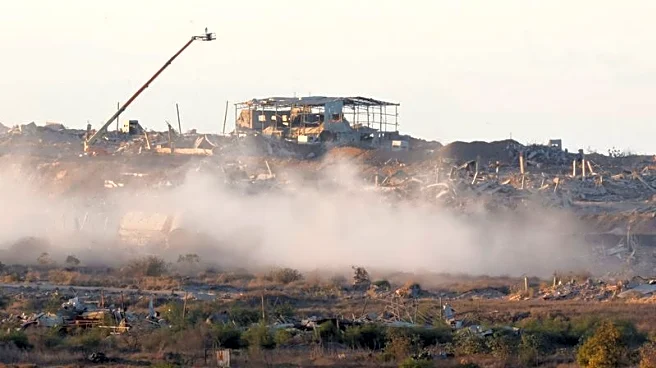What's Happening?
President Trump has announced a ceasefire agreement between Israel and Hamas, marking the first phase of his peace plan. The deal, brokered with the help of Arab allies like Qatar and Egypt, requires Israel to cease military operations and partially withdraw from Gaza. Hamas is expected to release 20 Israeli hostages by next week. This development follows Trump's efforts to position himself as a global peacemaker, despite challenges in achieving lasting peace in other conflicts. The ceasefire is a significant diplomatic achievement, but the broader peace plan's success depends on resolving issues like Hamas's disarmament and establishing a postwar arrangement for Gaza.
Why It's Important?
The ceasefire agreement is a critical step towards reducing hostilities in the Israel-Hamas conflict, potentially stabilizing the region. It underscores President Trump's diplomatic influence and his ability to broker deals with international allies. However, the unresolved disarmament issue poses a challenge to achieving lasting peace. The deal's success could impact U.S. foreign policy and its role in Middle Eastern affairs, while failure to address disarmament could lead to renewed conflict. Stakeholders, including Israel, Hamas, and Arab states, have significant interests in the outcome, affecting regional stability and international relations.
What's Next?
Further negotiations are needed to address disarmament and establish a lasting governance structure in Gaza. Arab states and the Palestinian Authority may play a role in forming an alternative governing force to replace Hamas. The success of these efforts depends on the willingness of all parties to compromise and the credibility of threats from a coalition of Arab states, the U.S., and Israel. The international community will closely monitor these developments, as they could set a precedent for conflict resolution in the region.
Beyond the Headlines
The ceasefire deal raises ethical and legal questions about the use of force and the role of external powers in regional conflicts. It also highlights the complexities of achieving peace in areas with deep-seated political and cultural divisions. The long-term implications could include shifts in power dynamics within the region and changes in U.S. foreign policy priorities.












